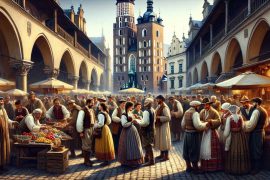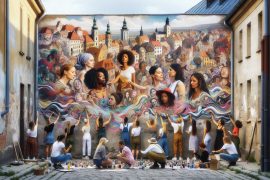Poland has a diverse range of visual arts forms. Whether it’s a painting or a handcrafted item, the polish will give you a sense of its distinct creativity and exhibit its artistic abilities. Aside from its ancient architecture and rich tradition and culture, Poland is unquestionably a bustling city; something few people believe Poland is capable of. As a result, in order to inform you about Polish art, this article will investigate its emergence as well as the prominent art styles that can be found there.
The emergence of the Polish art and artists
Poland surely produced innovative artists and their works in the nineteenth century. Though European culture inspired these works, Polish painters were able to add their own creative flair. Jan Matejko’s Kraków school of historical painting created colossal depictions of big incidents and traditions throughout Polish history. He is known as Poland’s most great artist or possibly the country’s “national painter.” During this time, realism and impressionism were popular art forms.
Artists of the Avant-Garde movement reflected numerous schools and aspects of life throughout the twentieth century. During this time period, various artists were influenced by various art movements and made art pieces based on the message they wished to convey. Cubism influenced Tadeusz Makowski, while Wadysaw Strzemiski and Henryk Staewski created in the Constructivist style. During this time, World War II also broke out, giving rise to postwar painters.
After 1989, contemporary art evolved, with more and more modern artists emerging. Many cities constructed museums of modern art, which house local and global collections, such as Krakow, Wroclaw, and Toru.
Types of arts
Poland has a rich collection of art to show their creativity to the world. Some of these arts are listed below:
Egg painting
Polish people enjoy displaying their artistic abilities on everyday items such as eggs. The concept of egg painting originated in ancient Mesopotamia. The tradition of painting eggs dates back to the 10th century. A week after Easter, Poles decorated and gave each other eggs to symbolise a better beginning and birth.
There are several methods for painting an egg, including natural dye and wax. A distinct type of innovation is also widespread, in which the shells are drilled using a CNC milling machine and then painted.
Handmade palms
Palm Sunday, which is celebrated worldwide a week before Easter, people usually make creative palms with their artistic skills. Originally made from willow trees to represent the longevity and rebirth of the soul, these palms were eventually embellished with ribbons, dried flowers, or coloured. The top of the willow is supposed to remain green, but the remainder is used to display various people’s creativity.
Wood carving
Wood carving is an extremely tough skill to master. And in Poland, expressing one’s artistic side through wood carving is particularly widespread. Whether furniture or wall elevations, each aspect allows the poles to express their creativity. The incisions form different styles, and different embellishments can also be seen on Górale’s clothing. These patterns are now used for clothing as well as tattoo motifs.







Comments are closed.